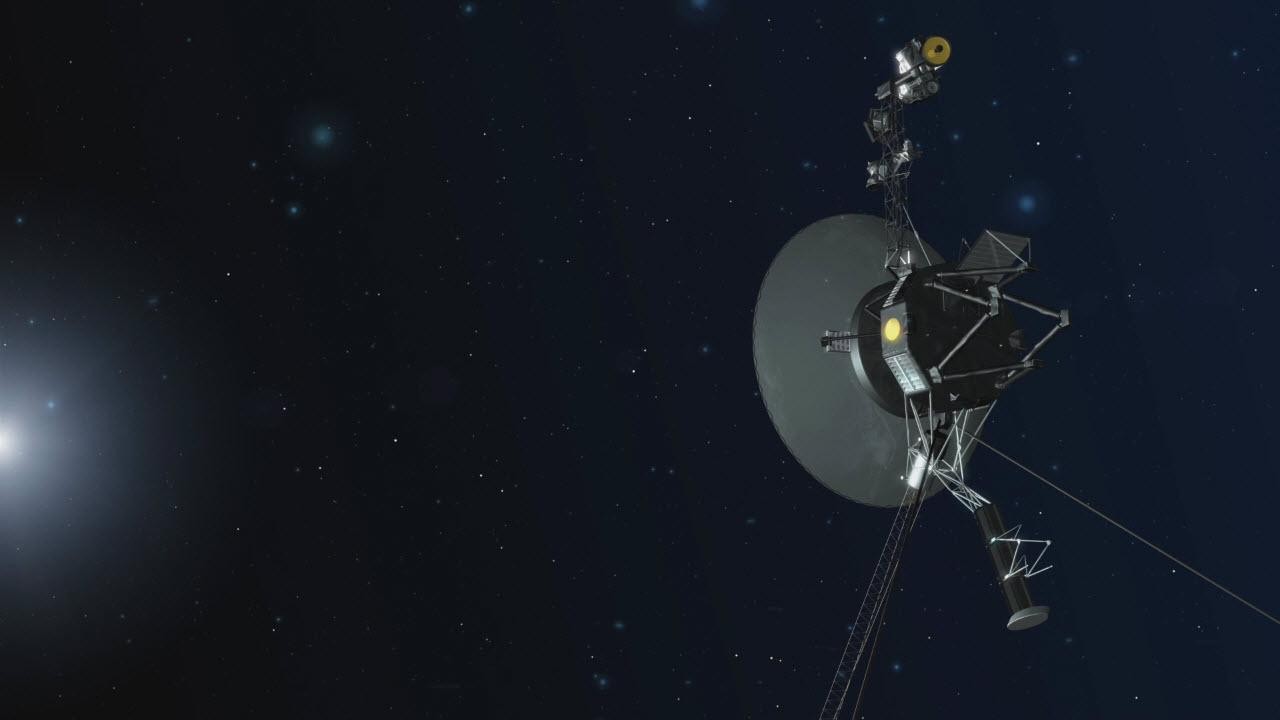NASA reestablishes full contact with Voyager 2 probe after nail-biting 2-week blackout
After accidentally shifting Voyager 2's antenna by two degrees, NASA fell out of contact with the interstellar probe on July 21. On Aug. 4, the agency succesfully reset the probe's antenna, restoring communications.

UPDATE: On Aug. 4, NASA confirmed that the agency has reestablished full communications with the Voyager 2 probe, after a nail-biting two weeks of radio darkness.
After detecting a "heartbeat" signal from the probe on Aug.1, scientists at NASA's Jet Propulsion Laboratory (JPL) sent a "shout" to the probe in an attempt to manually realign its antenna toward Earth. After roughly 37 hours — 18.5 hours for NASA's signal to reach the probe at its interstellar frontier, and another 18 .5 hours for Voyager 2 to respond — "the spacecraft began returning science and telemetry data, indicating it is operating normally and that it remains on its expected trajectory," JPL said in the statement.
NASA has temporarily lost contact with the Voyager 2 probe — the second-farthest human made object from Earth in the universe, currently sailing through interstellar space roughly 12.3 billion miles (19.9 billion kilometers) from home.
According to a statement from NASA JPL, scientists lost contact with the probe on July 21 after a series of planned commands inadvertently caused Voyager 2 to angle its antenna away from Earth by about two degrees. Unable to transmit or receive messages from NASA's Deep Space Network — an international array of large radio antennas that support many of NASA's interplanetary missions — Voyager 2 is essentially adrift and alone in the dark of space, having left the outer edge of our solar system in November 2018.
Luckily, the radio blackout should be temporary, NASA said. Voyager 2 is programmed to reset its antenna's alignment several times each year to stay in contact with Earth as it drifts ever farther away. The next reset is scheduled for Oct. 15, at which point communication with Voyager 2 should resume.
Related: Voyager 1 sends strange signals from beyond the solar system. Scientists are confused.
The twin Voyager probes were launched in August and September 1977, 16 days apart from one another. (Counterintuitively, Voyager 2 launched before Voyager 1). Both probes flew fly by the outer solar system planets before ultimately passing through the farthest boundary of the heliosphere — the outermost layer of the sun's atmosphere that separates our solar system from interstellar space.
Voyager 1 made it to interstellar space first, passing beyond the heliosphere in August 2012. The single most distant human made object from Earth ever created, Voyager 1 is currently about 14.8 billion miles (23.8 billion km) from our planet, and gaining distance every day. Communications with Voyager 1 remain uninterrupted.
Sign up for the Live Science daily newsletter now
Get the world’s most fascinating discoveries delivered straight to your inbox.
Both Yoyagers have enough electircal power and fuel to continue their current operations until at least 2025, according to NASA. But whenthe day comes that both probes inevitably cease communications with Earth forever, their mission to the stars will still continue. Stored aboard both probes are twin copies of a gold-plated copper disk, known as the Voyager Golden Record — a sort of audio postcard designed to share Earth's natural and musical heritage with any intelligent aliens that may one day chance upon the probes. The records each contain 27 pieces of music, including Bach and Chuck Berry, 22 minutes of nature sounds and voices speaking in 59 human languages.
The probes also contain an audio player with pictorial instructions, and a star map showing the location of Earth. Whether anyone finds them is a question for another millennium.
This article, originally published on Aug. 1, was updated on Aug. 8 after NASA successfully reestablished communication with the Voyager 2 probe.

Brandon is the space/physics editor at Live Science. His writing has appeared in The Washington Post, Reader's Digest, CBS.com, the Richard Dawkins Foundation website and other outlets. He holds a bachelor's degree in creative writing from the University of Arizona, with minors in journalism and media arts. He enjoys writing most about space, geoscience and the mysteries of the universe.









